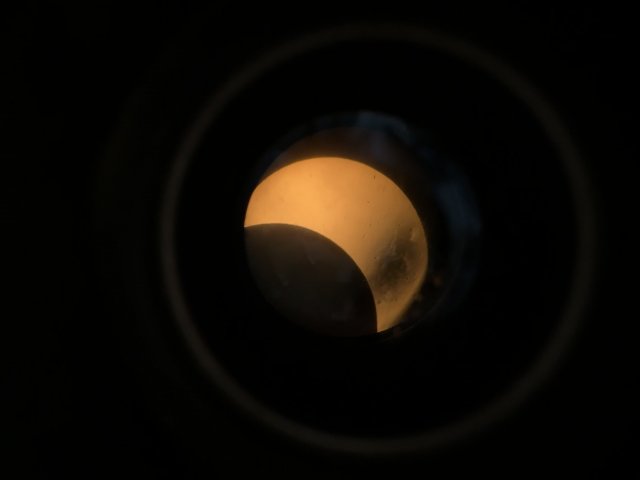This morning, I put on my ice cleats, grabbed my hand auger, and headed out across the white crunchy surface of the ice. As I trudged across I kept an eye on the far shore, aiming for a point about halfway across. Eventually I stopped; sure enough, my calibrated eyeball seemed to indicate that the far shore was about the same distance from me as the bank I had just left. I had arrived at my goal.
I set the auger in place and began to drill. The ice at the surface was very "airy", having been pockmarked by brief rain showers that have occurred a few times in recent days, and this "white ice" cuts quickly. But only a few inches down it turned into clear "black" ice, with no bubbles, frozen hard as rock. Drilling slowed.
I had no extension on the auger, meaning that by the time I got through 2 feet of ice I was running out of room to spin the auger handles. I was crouched awkardly, and the angled section of the tool on which the handles were mounted was only inches from striking the top of the ice, which would have meant the end of my ability to go deeper...when I broke through.
Normally, breaking through results in a geyser of water surging up through the hole, propelled and powered by the weight of megatons of ice pressing down on the water surface. In this case, that didn't happen, as the ice surface was solid in all directions and still attached to and supported by the shoreline all around. It was a solid surface of ice, essentially held in place above the water below but not applying pressure to it as it would have out on the lake. I kicked the accumulated shavings away from the hole, and turned to head home...75 feet away...
...because I was in the middle of my little backyard pond, maybe 14 or 15 feet long and about 10 or 12 wide.

I was less than 6 feet from either "shore". This was not a fishing expedition; I was just drilling my annual springtime hole that would allow me to drop a pump to the bottom of the pond (maybe 3 feet deep). I'll wait until the ice has melted down to just a few inches, keeping the hole clear all the while, and then extract almost all the water from below, allowing the pond to refill itself from snow melt. It's my inground pond's single annual water change; hard to say what percentage is changed this way, but I'm guessing it must be at least 80%.
It's the single most labour-intensive and physically demanding water change of my year.









